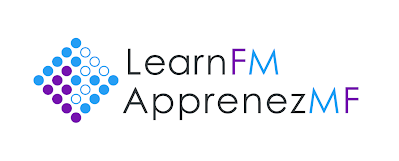Objectives
By the end of Family Medicine Clerkship, students will be able to:
1. To be able to screen for and diagnose depression including
a. using current criteria and other diagnostic and functional assessment tools
b. Mental status exam, including assessment of suicide/homicidal risk, and take appropriate action where necessary
2. Identify high risk factors for depression and suicide.
3. Describe variant presentations of depressed patients.
4. Propose a differential diagnosis for patients with depressed mood to rule out important secondary causes and an initial plan for investigation & management
5. Describe non-pharmacologic and pharmacologic approaches to management, including risks, benefits and limitations of the method(s) used
a. Pharmacologic
• Mechanism of action
• Medication classes & interactions
b. Non-pharmacologic
• Resources available in community
• Effect of/on family & social supports
Clinical Cards
Microcases
https://cards.ucalgary.ca/deck/372
References
Recommended Resources Addressing the Objectives
Treating Major Depressive Disorder (25 pages, but very large font, easy to read) *will change over time
Objectives covered: 1b, 5a (partial), 5b
http://psychiatryonline.org/content.aspx?bookid=28§ionid=1663263
American Psychiatric Assocication. Treating Major Depressive Disorder. 2010; Available at: http://psychiatryonline.org/content.aspx?bookid=28§ionid=1663263. Accessed June/11, 2014.
no pubmed ID
A Primary Care Focus on the Treatment of Patients With Major Depressive Disorder (6 pages text, 4 pages figures/tables) *will change over time
Objectives covered: 1a, 5ab
http://www.ncbi.nlm.nih.gov/pmc/articles/PMC3170663/
Weihs K, Wert JM. A primary care focus on the treatment of patients with major depressive disorder. Am J Med Sci 2011 Oct;342(4):324-330.
PMID:21642822
Screening for Depression in the Primary Care Population (15 pages, with template screening questionnaires at the end)
Objectives covered: 1ab, 2
http://www.ncbi.nlm.nih.gov/pubmed/24830614
Deneke DE, Schultz H, Fluent TE. Screening for Depression in the Primary Care Population. Prim Care 2014 Jun;41(2):399-420.
PMID:24830614
Various forms of depression (8 pages)
Objectives covered: 3
http://www.ncbi.nlm.nih.gov/pmc/articles/PMC3181770/
Benazzi F. Various forms of depression. Dialogues Clin Neurosci 2006;8(2):151-161.
PMID:16889102
DSM V – Depressive Disorders; sections on “Substance/Medication-Induced Depressive Disorder” and “Depressive Disorder Due to Another Medical Condition”
Objectives covered: 4
http://dsm.psychiatryonline.org/content.aspx?bookid=556§ionid=41101760
American Psychiatric Assocication. Depressive Disorders. 2013; Available at:
http://dsm.psychiatryonline.org.ezproxy.lib.ucalgary.ca/content.aspx?bookid=556§ionid=41101760. Accessed June/26, 2014.
No PubMed ID
Foundational Knowledge
The Calgary Guide – Pathogenesis of major depression
Additional Resources
Psychotropic medications reference – with generic and brand names of different medications, and their action on various neuro-transmitters (2 pages)
Objectives covered: 5a
http://thehub.utoronto.ca/family/wp-content/uploads/2013/07/Psychotropic-Medications-Reference-Card.pdf
Preston J. Quick Reference to Psychotropic Medications. 2014; Available at: http://psyd-fx.com/wp-content/uploads/2013/11/Quick-Reference-2014-.jpg. Accessed June/3, 2014.
no PMID
Patient Information

